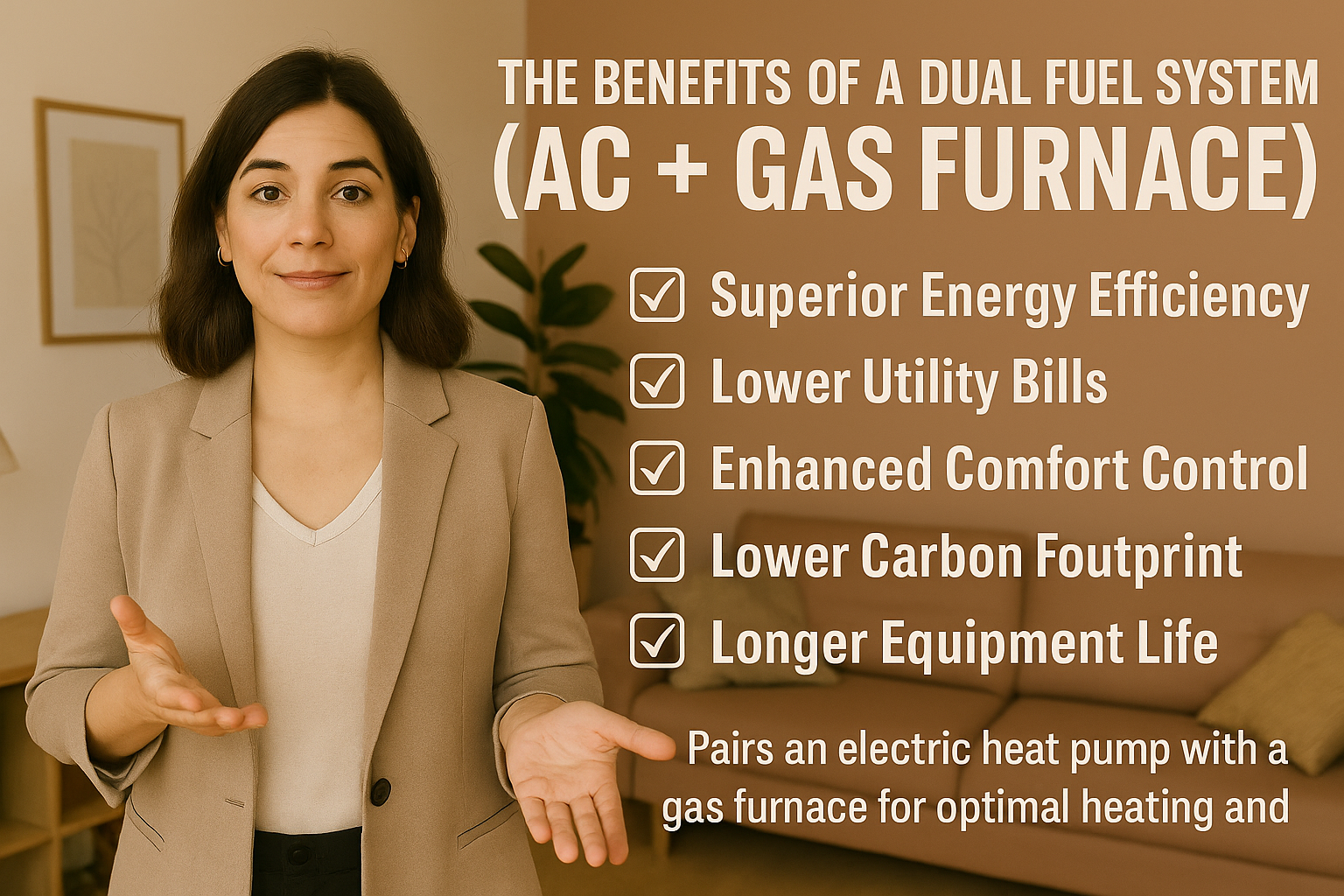When it comes to heating and cooling your home, you don’t have to settle for just one type of system. A dual fuel HVAC system—which pairs an electric heat pump (or AC) with a gas furnace—offers the best of both worlds: efficiency when it’s warm, and power when it’s cold.
For savvy homeowners who want year-round comfort and cost savings, dual fuel systems strike a smart balance. Let’s break it all down.
🧊🔥 What Is a Dual Fuel System?
A dual fuel system combines:
-
An electric air conditioner or heat pump (typically with R-32 refrigerant)
-
A gas furnace (typically natural gas or propane)
They work together as a hybrid heating and cooling system, automatically switching between electricity and gas depending on outdoor temperature and energy cost.
🧠 Think of it like this:
-
When it’s mild outside, the heat pump runs in heating mode—it’s more efficient than using gas.
-
When it’s freezing outside, the gas furnace kicks in—it heats faster and keeps up better with frigid temps.
This intelligent switching is what makes it “dual fuel.”
🧠 Why Go Dual Fuel? Key Advantages
Here’s why more and more savvy homeowners are opting for dual fuel HVAC systems:
1. Superior Energy Efficiency
Heat pumps are extremely efficient at transferring heat—especially in moderate climates. They can deliver up to 3x the heat energy of the electricity they consume.
But when it’s bitter cold (below 30–35°F), their efficiency drops. That’s where the furnace takes over—no struggling or skyrocketing electric bills.
✅ Result: You use electricity when it’s efficient, and gas when it’s powerful.
2. Lower Utility Bills
Because the system is smart enough to switch between fuel types based on real-world performance, you avoid wasting money.
In fact, a dual fuel setup can reduce annual heating costs by 30% or more, depending on local utility rates and climate conditions.
💡 Example: In areas where electricity is cheap in fall/spring, but natural gas is cheaper in winter, a dual fuel system automatically selects the lowest-cost option.
3. Enhanced Comfort Control
You get the even, consistent heat of a heat pump during milder days—and the fast, toasty warmth of a gas furnace on bone-chilling nights.
It’s comfort you can feel without constantly adjusting the thermostat.
🛋️ Say goodbye to cold spots and short cycling. Say hello to balanced comfort year-round.
4. Lower Carbon Footprint
R-32-based systems already reduce the global warming potential (GWP) of refrigerants. Paired with an electric-first dual fuel system, your overall environmental impact can be significantly reduced.
💚 Bonus: Dual fuel systems can often be paired with solar or smart grid tools to further improve eco-efficiency.
5. Longer Equipment Life
Because each system (electric and gas) shares the workload, they wear down more slowly than single-fuel setups.
This can translate into fewer repairs and longer system life, especially if you maintain them seasonally.
🏡 Who Should Consider a Dual Fuel HVAC System?
Not every home needs a dual fuel setup—but it’s the ideal solution for many.
✔️ Dual Fuel is a great fit if:
-
You live in a climate with cold winters and mild springs/falls
-
You want to optimize utility costs
-
Your utility rates fluctuate or are tiered
-
You want to lower your environmental footprint
-
You’re replacing both your AC and furnace at the same time
-
You plan to stay in your home for 10+ years
📍It’s especially popular in states like:
-
Tennessee
-
Ohio
-
North Carolina
-
Missouri
-
Pennsylvania
These regions experience seasonal shifts that suit a hybrid approach perfectly.
In the next topic you will read about: R-32 Air Conditioners vs Heat Pumps: Which One’s Right for You?







